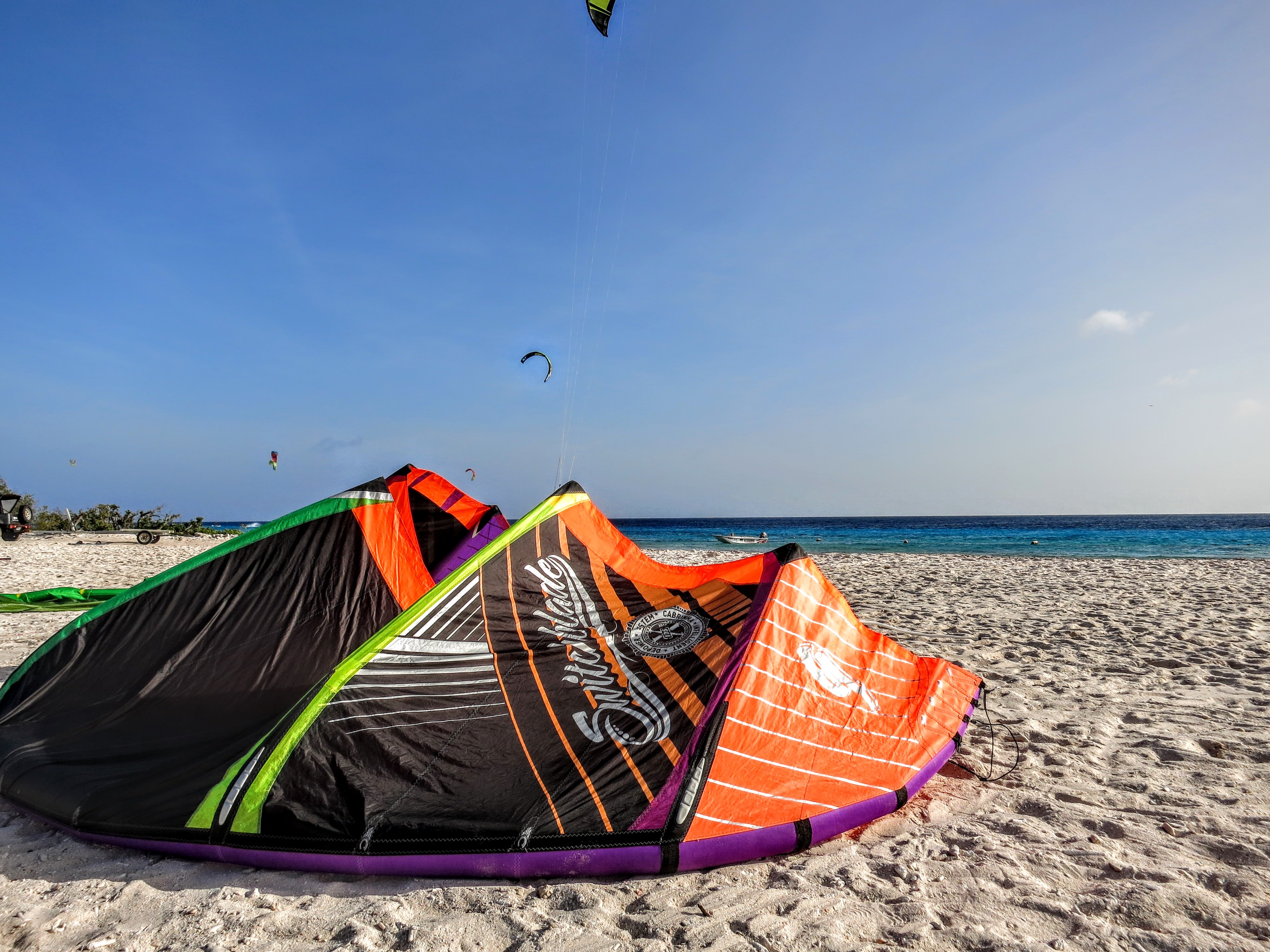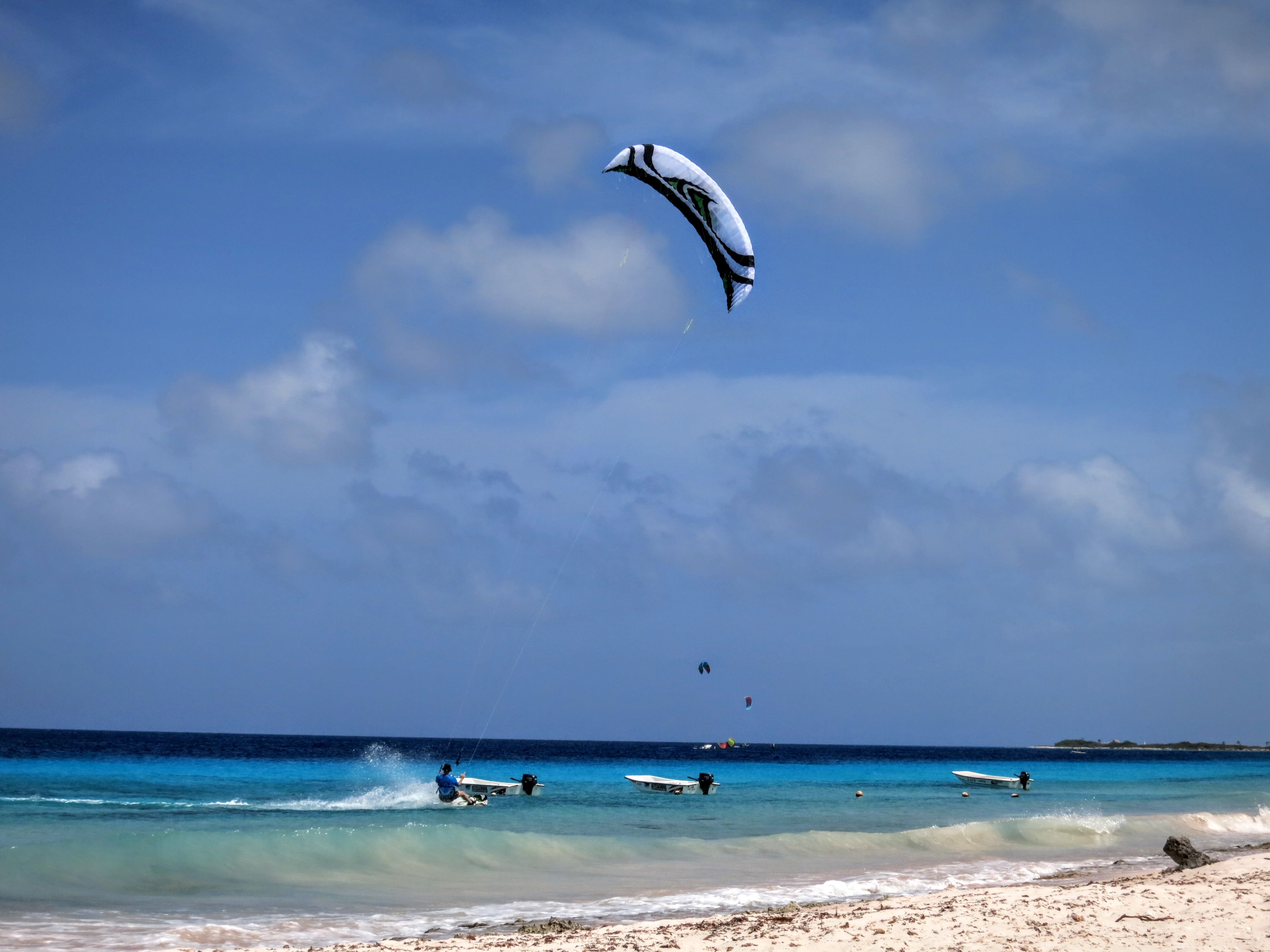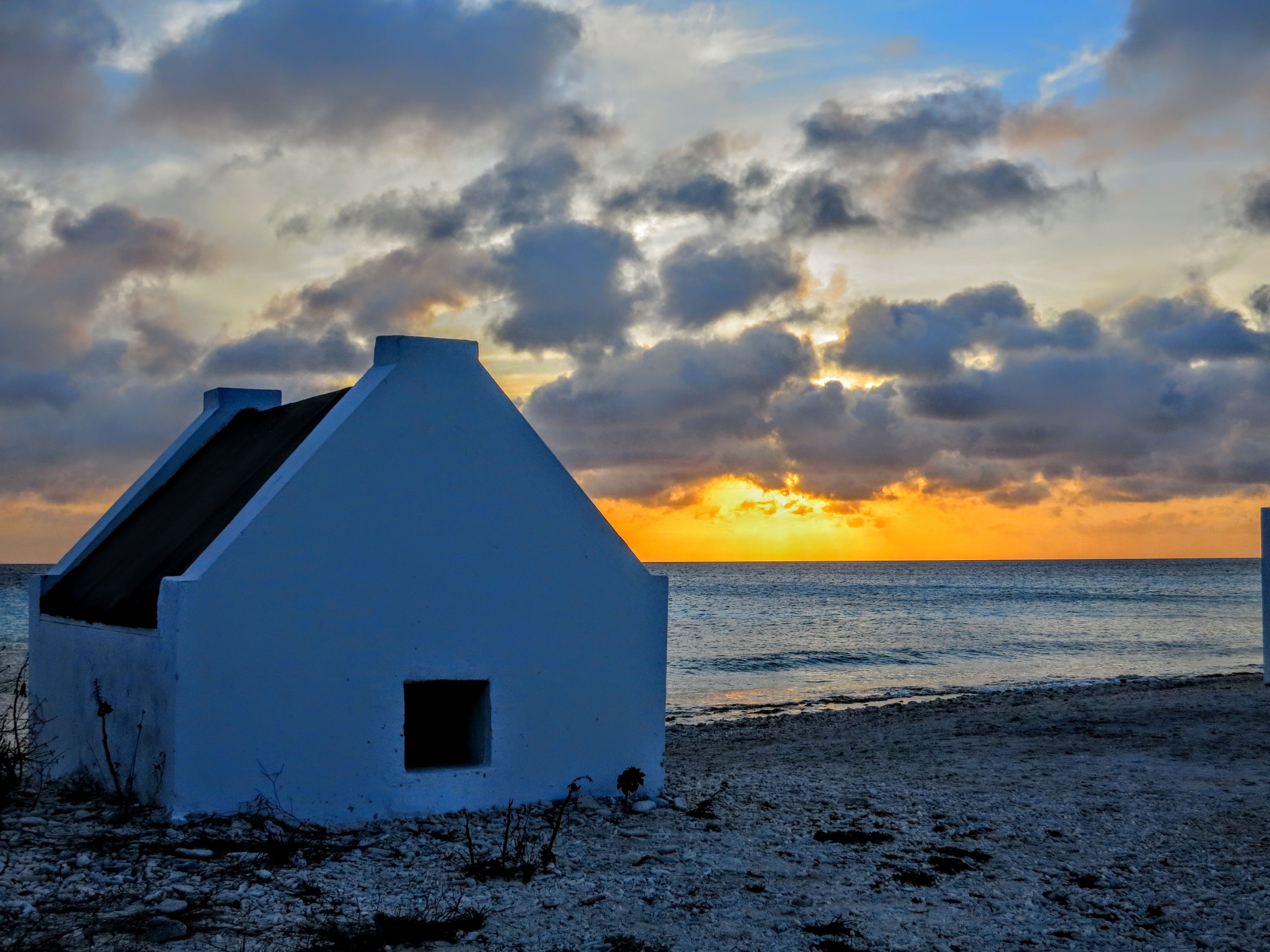Kiteboarding in Bonaire
Friday, September 15, 2017 Surfing and Kitesurfing by adminYou might wonder where Bonaire is. Well, think Aruba and Curacao, and you will find Bonaire, the B of the ABC Islands. A tiny island in the Caribbean Sea right of the coast of Venezuela, Bonaire is a paradise for water sports.
Bonaire is better known as a popular diving destination thanks to its pristine marine park. However, the constant wind and warm flat water have attracted windsurfers and kiteboarders alike in search of uncrowded spots.
Where to Kitesurf in Bonaire
Located in the southwestern part of the island, Atlantis Beach is the dedicated kiteboarding area on Bonaire. Imagine a white sand beach perfect for safe landing and launching, a direct shore access without much coral reef, and a large bay of turquoise water with barely ten kiters on a busy weekend. The warm water year round (around 80°F / 26°C ) means you don’t need any wetsuit, not even a shorty. Shortboards and rash guards are sufficient.

The wind is mostly offshore, a northeast trade wind making Atlantis Beach a spot for expert riders as it requires upwind skills. If not, the wind might blow you away until you reach Curaçao – the next land 30 miles away. No worry though. The onsite schools provide boat assistance for a nominal fee. With that open ocean in front of you and the rescue service available, try new tricks, jump, unhook, and ride your heart’s content!
Other kite spots include Pink Beach to the northwest of the island, and Klein Bonaire, the small sandy island by Kralendijk. You can drive to the first location but need a boat or a water taxi to reach the second. In both cases, these are advanced spots due to the offshore wind and lack of safety boats.

Learn to Kitesurf
Interestingly this offshore wind provides ideal conditions for beginners to learn. Kiteboarding classes come with a boat that follows you, ready for the rescue should you go too far out. The vast expanse of water allows new kiteboarders to test their skills and encourage them to “let go” of the kite without the fear of hurting yourself or someone else. This freedom allows you to progress knowing that your instructor is right behind you with the boat to safely bring you back to the beach.
Start by learning with the trainer kite on the nearby beach, and move up to body drag and water start with bigger kites a short distance away. Within a few days, depending on how eager and adventurous you feel, you might be able to start riding on your own.
Kiteboarding Schools on Bonaire
Two schools, Kiteboarding Bonaire and Bonaire Kiteschool, are on the beach and have instructors available most days. During the peak season, you might have to schedule your lessons a few days in advance. Classes can be in English, Dutch, and German, and include the necessary equipment: harness and vest. Helmets even include a headset so that you can hear the advice of your instructor while practising. This setup is excellent to improve your skills, correct your posture and learn what you are doing wrong.

Kiteboarding Gear Rental
The schools have gear for rent to advanced riders. Brands and models vary, and availability depends on the demands. If you have a particular brand in mind, you might want to bring it with you or check with the schools to reserve ahead of time.
When to Go Kiteboarding in Bonaire
The northeast trade winds are constantly blowing on Bonaire, averaging 17 to 25 knots, which means you can kiteboard about any time during the year. December to July are however the best months, especially February to July. If you are not a morning person, you are in luck there as the winds usually pick up in the afternoon with the water even flatter.
How to Get to Bonaire
Bonaire is an island municipality of the Netherlands and has good connections from Amsterdam via Quito. From North America, most flights go through Newark, Atlanta, Houston, and San Juan. Once on Bonaire, a car or a bike rental will give you the freedom to explore the island.

Bonaire Travel Tips
There is limited public transportation on the island so a rental – car or motorbike – is recommended. Driving is easy; there are only a few paved roads outside the main town of Kralendijk. Just watch for the roaming donkeys!
On non-windy days or to take a break from kiteboarding, go on a day trip around Bonaire. Learn about the island’s slave history, visit Rincón, hike among iguanas and flamingos at the Washington Slagbaai National Park, or kayak through Lac Bay’s mangroves.

Go underwater! Scuba-diving is top notch on the island – swim with turtles or search for seahorses.
Gorge yourself with fresh seafood and taste Bonaire cuisine, where Dutch ingredients meet Caribbean flavours. Don’t leave before trying hot barracuda ravioli, goat stew or iguana meatballs!
Any water activity, be it diving, kitesurfing, or even swimming, requires a marine tag since the water around the island is a protected marine park. Scuba-divers pay US$25 per person, and the other water activities are US$10 per person. The Nature Fee tag is valid for a whole year. Scuba-divers should keep their receipt as it provides complimentary admission to Washington-Slagbaai National Park as well. Note that with the scuba-diving tag, you don’t need to buy one for kiteboarding – that diving tag includes all water activities. You can purchase your tag from most water sports operations: dive centres, kite schools, and kite resorts.